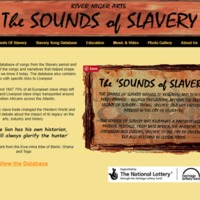
The Sounds of Slavery
The Sounds of Slavery was a project by the performance and visual arts group River Niger Arts to research, record and develop a performance-related programme around the musical heritage and legacy of slavery. The project took particular interest in these themes in relation to the City of Liverpool, but also addressed them in global terms. The project created a database of songs and narratives from the period of slavery. Members of the River Niger Orchestra also performed at a Sounds of Slavery performance at Liverpool Hope University. Some of the songs performed included 'The Chase', 'No More Auction Block' and the African American spiritual 'The Jubilee Song'. The project was accompanied by a series of performance and visual arts education workshops with schools.
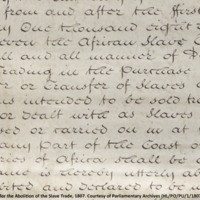
West Wales and the Slave Trade
The Friends of Narberth Museum presented an exhibition which examined the people, places and events in West Wales with links to the transatlantic slave trade and the campaign for abolition. Children from local schools worked with copies of documents and diaries relevant to the Narberth area, and designed their own commemorative plates. Events included a talk on the Underground Railroad and quilting, a children’s writing workshop, and a Deep South supper with music.
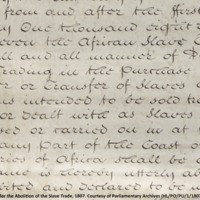
Seeing Slavery
The Potteries Museum and Art Gallery in Stoke-on-Trent held the Seeing Slavery exhibition from October to December 2007, with an associated programme of events and activities. Objects from the museum's collection relating to slavery and abolition were on display, including an 18th century punch bowl, inscribed with 'Success to the Africa Trade'. The museum commissioned new work by the artist Pogus Caesar: the piece '80 lbs of chains' included a soundscape depicting the sounds of a slave ship. The museum held digital workshops in which visitors were able to create their own soundtrack to the exhibits.
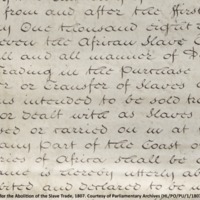
Voices from Africa
To commemorate the bicentenary, St Mungo Museum of Religious Art and Life (with support from the Scottish Museum Council) explored the social and economic legacies of slavery, including racism and cultural stereotyping. The museum worked with members of Glasgow's African and African Caribbean communities on reinterpreting objects from across Glasgow Museums. As part of the project, artist Beth Forde was commissioned to create an artwork to explore some of the issues raised, titled 'The shadow of the object fell upon the ego'. Voices from Africa was part of a year-long programme of lectures, schools events and exhibitions highlighting the life of African communities in Glasgow. This included a photographic project with photographer Roddy Mackay to represent African heritage in Scotland, and a series of free workshops exploring aspects of faith and belief.
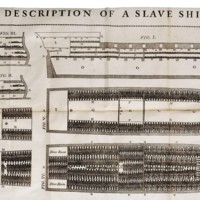
The Print that Turned the World?
The Print that Turned the World? was an exhibition at the London Print Studio, which examined the role played by printmaking in changing public attitudes towards the slave trade and influencing the abolition campaign. The exhibition looked in particular at the influence of the widely publicised print of the slave ship 'Brookes', first published in 1788; the crowded and inhumane conditions depicted had a significant impact on public opinion. The exhibition also examined the role of William Wilberforce in the abolitionist campaign, and the continuation of anti-slavery efforts in modern times. London Print Studio worked with local schoolchildren in creating the exhibition and associated artworks.
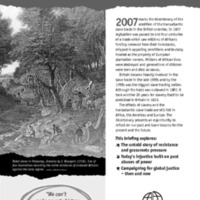
200 Years On: The legacies of enslavement and abolition
The World Development Movement seeks to increase awareness of political views in regards to world economic and social development. The organisation published a briefing in 2007 to mark the bicentenary, exploring the stories of grassroots pressure and the historic and modern campaigns for global justice. In collaboration with the University of Leeds, the World Development Movement also organised two public events looking to explore the lessons to be learned from the struggle to end the slave trade and examining contemporary campaigns in Africa and beyond for global social justice. Speakers included the Kenyan writer and academic Ngugi wa Thiong'o.
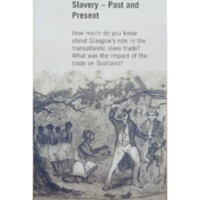
Towards Understanding Slavery: Past and Present
The Towards Understanding Slavery: Past and Present initiative by Glasgow City Council aimed to increase understanding of the human effects of the transatlantic slave trade, and explore its impact on Scotland's national heritage and Glasgow's history. A series of events, exhibitions and education programmes ran across the city throughout 2007. These included an exhibition of William Blake's works relating to the idea of slavery at the Burrell Collection, and a photographic exhibition by Graham Fagen, 'Downpresserer', at the Gallery of Modern Art, examining the cultural heritages of Scotland and Jamaica. There was a series of performances and talks at Kelvingrove Art Gallery and Museum, and events at the People's Palace and Winter Gardens focused on links between Glasgow's tobacco trade and slavery through the family portrait of the 'tobacco lord' John Glassford (there is said to be a figure of a young black man behind Glassford's chair that has been deliberately obscured or painted over). A year-long programme of lectures, schools events and exhibition highlighting the life of African communities in Glasgow took place at St Mungo Museum of Religious Life and Art.
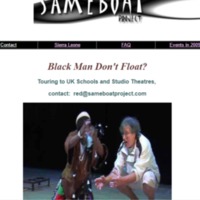
Black Man Don't Float?
Black Man Don't Float? is a play developed by Sameboat Project, a not-for-profit organisation working in collaboration with the Pierian Centre Bristol, Gecko Theatre Ipswich, and the Arrow Project at University College Plymouth. Set in the ocean off West Africa, a white yachtsman collides with an African economic migrant who is trying to reach the Canaries in a home-made vessel. They have to co-operate to survive, but their differences lead to confusion. Performed by West African performer Ayodele Scott and UK-based writer and performer Martin Hubbard, Black Man Don't Float? was shown in the UK and then travelled to Sierra Leone. The show was accompanied by a workshop entitled Fair Share, exploring issues around the fair sharing of resources, and the challenges facing developed and developing nations in their negotiations about aid, trade and the exploitation of natural resources.
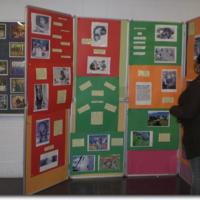
Commemorating 1807
A day of activities to mark the bicentenary was held in November 2007 at Forest Gate Youth Zone, a young people's drop-in centre in the London Borough of Newham. The day included an exhibition, workshops and performances.
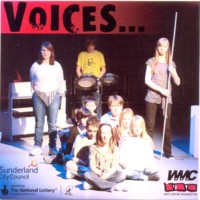
Voices...
A collaborative project between Arts Centre Washington's Youth Theatre and Washington Music Collective, providing development of live music activities for young people within Washington and the surrounding areas. The project involved improvisation, creative writing, music and drama workshops for young people during school holidays, and culminated in a thirty minute play around the themes of slavery. A DVD was produced featuring musical shorts and video diaries of the young actors' experiences. One theme covered was the limbo dance, originating in Trinidad and Tobago, and with symbolic links to enslaved people entering the galleys of a slave ship.
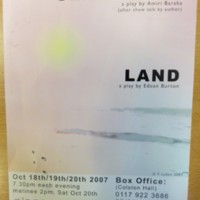
Slave Ship and Land
Two plays, Slave Ship by Amiri Baraka and Land by Edson Burton, were presented in Bristol by Say It Loud, a multicultural arts development organisation. Slave Ship was first performed in the United States in 1967. Land was written especially for the bicentenary project. In conjunction with the project, Say It Loud organised drama workshops on the subject of slavery in Bristol schools.
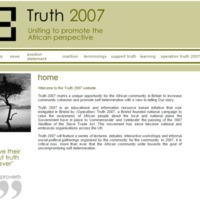
Truth 2007: Uniting to promote the African perspective
Truth 2007 was an educational and information resource-based initiative that was instigated in Bristol by (Operation) Truth 2007 led by Jendayi Serwah. It became a national coalition of UK-based Pan-African organisations which aimed to raise the awareness of the African perspective on local and national government plans to mark the bicentenary. Truth 2007 featured a series of lectures, debates, interactive workshops and informal social-political gatherings organised by community groups. The Truth 2007 coalition expressed dissatisfaction with much of the terminology and focus of the 'official' commemorations.
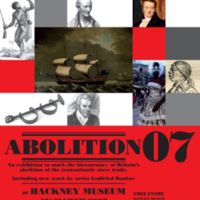
Abolition 07
Hackney Museum's Abolition 07 exhibition told the story of British involvement in the transatlantic slave trade, the resistance to it, and its abolition, and in particular emphasised the involvement of Hackney's residents in the abolition movement. The display included new artwork by Godfried Donkor in collaboration with young Hackney artists. A film of interviews with Hackney residents, Hear My Voice, was produced. Over 1200 children from Hackney Primary Schools took part in poetry workshops at the museum with poets Adisa and Baden Prince. Their poems and responses were published in the booklet 'And Still I Rise'.
The research into Hackney's connections to the transatlantic slave trade continued in 2013-2015 with 'Local Roots / Global Routes', a collaborative project between Hackney Museum and Archives and the Legacies of British Slave-ownership project.
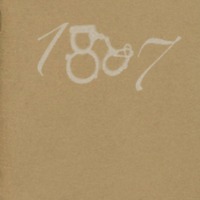
1807 and Tate
The industrialist Sir Henry Tate was the early benefactor of the Tate Collection, rooted in the art of the 18th and 19th centuries. Tate's fortune - much of which was spent on philanthropic initiatives in Britain - was founded on the importation and refining of sugar, a commodity inextricably linked to slave labour in the Caribbean. There were a number of initiatives across the Tate galleries to explore these connections. 'Tracks of Slavery' at Tate Britain displayed a selection of images from the Tate's collections which provided a commentary on the relationship of British society with slavery. Displays at Tate Modern included a selection of new acquisitions linked by their treatment of issues arising from slavery and oppression. Tate Liverpool exhibited paintings by Ellen Gallagher. Special events included Freedom Songs at Tate Britain (workshops to create poetry and music by exploring themes of slavery and freedom) and a discussion at Tate St Ives looking at the links between Cornish maritime traditions, the slave trade and the Caribbean.
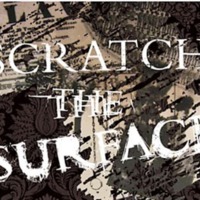
Scratch the Surface
Scratch the Surface at the National Gallery brought together two portraits, Johann Zoffany's 'Mrs Oswald' (1763-4) and Sir Joshua Reynolds's 'Colonel Tarleton' (1782), to explore the complex relationship between these sitters and slavery. Colonel Tarleton, as MP for Liverpool in the 1790s, argued in Parliament against the abolition of the transatlantic slave trade. Mrs Oswald, along with her husband Richard Oswald, owed part of their wealth to a number of plantations in the Americas. The artist Yinka Shonibare was invited to create a new installation in response to these two portraits, which was also on display. A varied programme of events and activities accompanied the exhibition, including tours, talks, workshops and films.
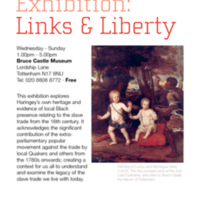
Links and Liberty
An exhibition at Bruce Castle Museum (in partnership with Euroart Studios) explored the transatlantic slave trade, Haringey's heritage relating to the trade and its legacy, and the historic Black presence in the borough from the 16th century onwards. There was a particular focus on the painting of Lucius and Montague Hare, sons of Lord Coleraine (former owner of Bruce Castle), with their African servant. The exhibition also looked at the extra-parliamentary popular movement against the trade by local Quakers such as Priscilla Wakefield and others. Contemporary dance workshops for secondary schools were led by dance company Movement Angol.
The Links and Liberty exhibition included 'Stolen', a life-size installation by artists at Euroart Studios (John Fowler, Lorraine Clarke and Nigel Young) of a section of a slave ship. School pupils were encouraged to climb inside to imagine conditions on board.
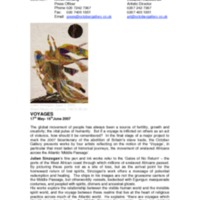
Bitter Aftertaste: Sugar, the Slave Trade and the Arts of the Atlantic World
The Bitter Aftertaste project included a range of schools’ workshops, an inter-generational outreach project, and a web-resource exploring the material culture and legacies of the transatlantic slave trade in art and society today. There were also two related exhibitions. For 'From Courage to Freedom', the gallery commissioned three leading visual artists from West Africa - El Anatsui, Romuald Hazoumè and Owusu-Ankomah - to create works to mark the bicentenary. 'Voyages' saw works by four artists - Julien Sinzogan, Tapfuma Gutsa, Pierrot Barra and Gérard Quenum - reflecting on the notion of voyages, in particular the movement of enslaved Africans across the Atlantic Middle Passage.
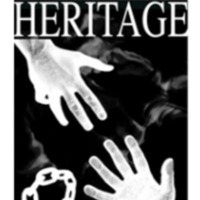
Dark Heritage
Dark Heritage from Bee Arts Community Interest Company comprised The DARK, a sonic art installation, and accompanying participatory educational activities. The DARK touring installation is a pitch black space designed to bring home the horrors of the transatlantic slave trade in the 18th century. The three dimensional soundscape uses ghosts as metaphors for the hidden aspects of the past, based on the Liverpudlian slave-ship worker Edward Rushton, slave ship Captain John Newton, and Kunie, an African man who met Rushton aboard an American ship. A programme of public sessions and creative educational workshops aimed at schools, colleges, youth and community groups were produced in collaboration with Kingswood Primary School in Lambeth. Dark Heritage travelled to six locations in the UK in 2007-08 starting in Greenwich, travelling to Ipswich, Gloucester, University of Hertfordshire, Norwich and finishing in Manchester.
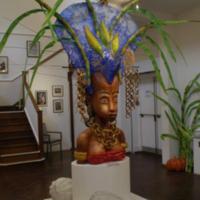
Parallel Views: Black History in Richmond
The Parallel Views exhibition and its associated community engagement programme explored the relevance of the bicentenary for communities in the London Borough of Richmond upon Thames, uncovering local associations with slavery and its abolition. It also told the parallel story of twin town Richmond, Virginia, USA, to broaden understanding of the transatlantic slave trade and the impact of its demise. The exhibition examined evidence of individuals of African origin who had come to Richmond, and residents with financial links to slavery and the slave trade, and to abolitionism. A film piece by choreographer and dance historian Dr Rodreguez King-Dorset explored the use of dance within the free Black community in London during the era of abolition. A display of contemporary artwork responded to the ideas of the exhibition. A sculpture by carnival artist Carl Gabriel linked consumers in Richmond and the conditions of production of slave-grown crops. The design was inspired by a series of workshops with local families. Artist-led workshops for children and young people led to the creation of a carnival costume piece which was included in the exhibition.
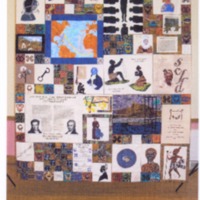
In Stitches
The In Stitches project was led by the African Families Foundation (TAFF) and brought together British, African and African-Caribbean women's quilting groups meeting in London, Liverpool, Bristol, Manchester and Birmingham. The In Stitches Quilt, designed by Janice Gunner, included 60 squares of embroidered images, texts and symbols, depicting historic figures, scenes and artefacts associated with the transatlantic slave trade and its abolition. The Quilt used several of the Adinkra symbols from Africa, originally printed on fabrics worn at funerals by the Akan peoples of Ghana. The accompanying work pack was designed to support learning about slavery based on the four themes of the Quilt: Capture, the Middle Passage, Life in the 'New World', and Proscription of Slavery. The Quilt was unveiled at City Hall in London, and then toured to the British Empire and Commonwealth Museum (Bristol), Central Library (Liverpool), Soho House (Birmingham), the International Quilt Festival (Birmingham) and Central Library (Manchester).